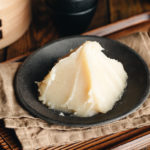
White Bean Paste (Shiroan)
White Bean Paste or Shiroan is a common and delicious sweet filling in popular Japanese confectionery (wagashi) like mochi and manju. With its milder taste and soft hue, it makes a great alternative to sweet red bean paste in your desserts and snacks.
Servings: 1 batch (1 lb or 450 g per batch)
Calories: 811kcal
Ingredients
- 7 oz dried lima beans (about 1 cup; for Japanese bean names, see end Notes)
- ¾ cup sugar (5.3 oz, 150 g; adjust to taste; you can increase up to equal the weight of the dried beans; see end Notes)
- ½ tsp Diamond Crystal kosher salt
Instructions
- Gather all the ingredients.
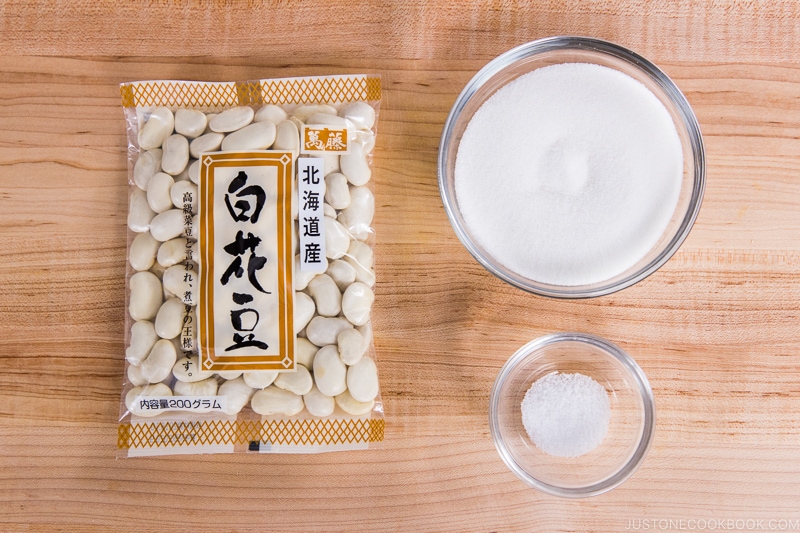
To Soak the Dried Beans (Overnight)
- To a large bowl, add 7 oz dried lima beans and rinse them under running water. Then, soak them in plenty of water overnight (8 to 12 hours; longer hours required in winter).
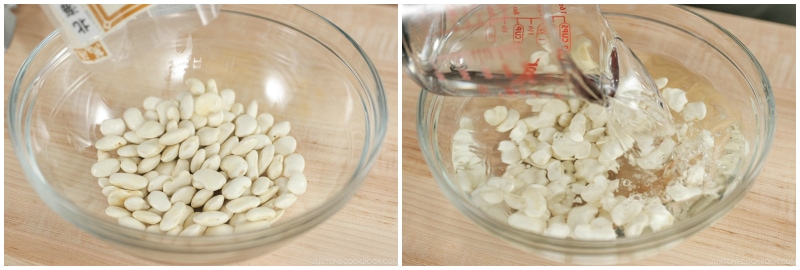
To Cook the Beans
- After 8–12 hours, you can easily remove the beans’ outer skin with your fingers. Peel off and discard the skins.
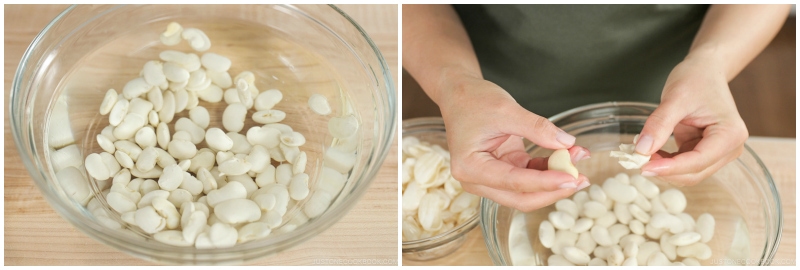
- Add the peeled beans to a pot and pour just enough tap water to cover the beans. To properly cook the beans, use the minimum amount of water needed to cover them; you don’t want the beans moving around in a large amount of water.
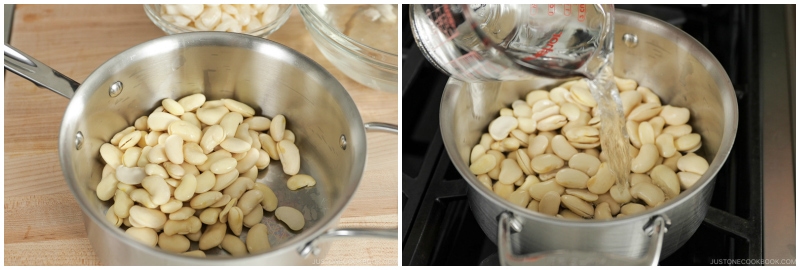
- Bring it to a boil on medium heat. Let it boil for 2 minutes while foam starts to appear.
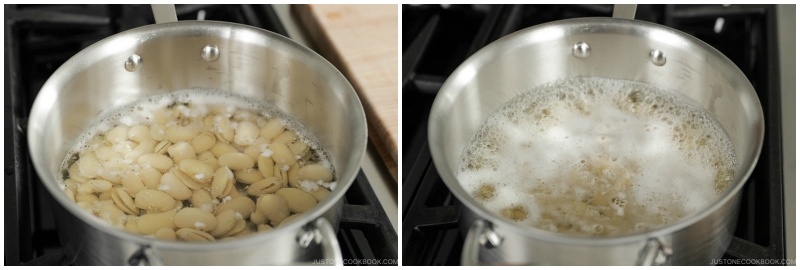
- Pour then beans into a sieve to drain the water. Quickly rinse the pot, then put the beans back in the pot. Add just enough cold water to cover the beans.
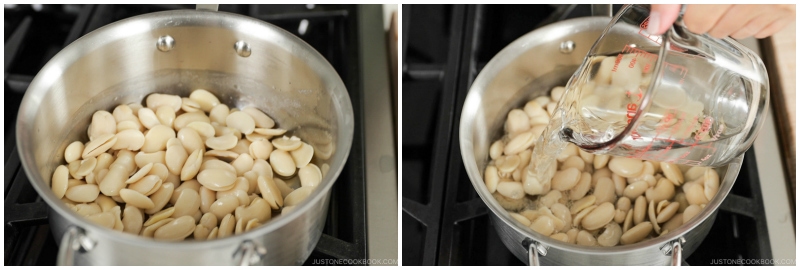
- Cover with a lid slightly ajar and let simmer on low heat until the beans become tender, about 1½ to 2 hours. You can shorten the cooking time by using a pressure cooker (set at High pressure for 15–20 minutes).
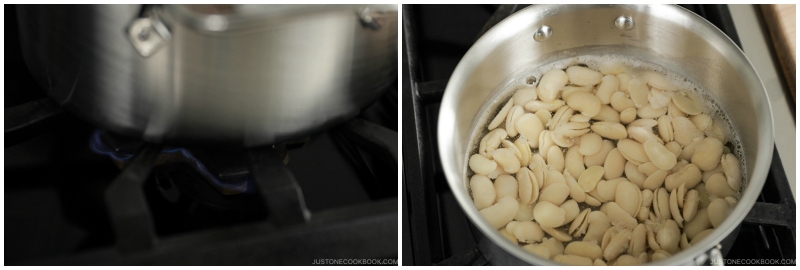
- Once in a while, check the beans and skim off the foam on the surface. This helps to make the white paste even whiter. Add a bit more water to keep the beans covered, if needed. Make sure the amount of water is just enough to cover the beans.
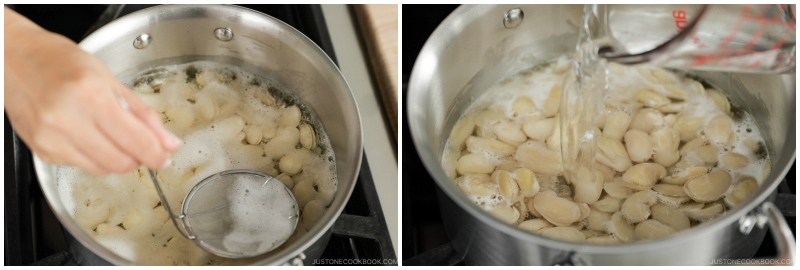
- When you can easily crush the beans between two fingers, it’s done.
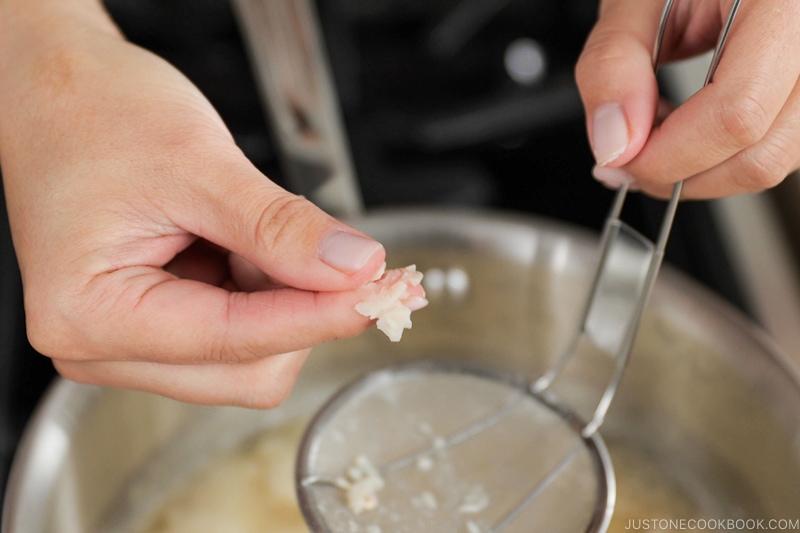
- Save a little bit of cooking liquid for the next step. Then, drain the remaining liquid from the beans.
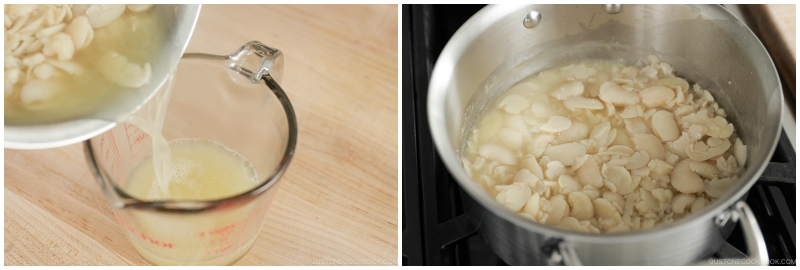
To Make the Shiroan
- Transfer a small portion of drained beans to a fine-mesh strainer set over a large plate. I used a Japanese uragoshi-ki (it‘s also a flour sifter). Press the beans through the strainer using a wooden spatula. You will get a finer and smoother paste built up under the sieve/over the plate. If it’s too dry, put a tiny bit of cooking liquid on the beans before pressing. Alternatively, you can use a food processor to purée the beans. Add a little bit of cooking liquid, if necessary.
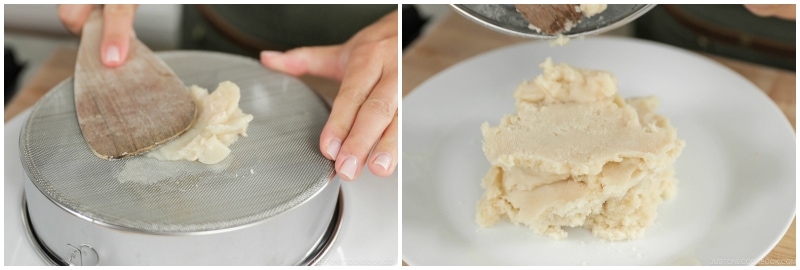
- Put the paste in a clean saucepan. Add ¾ cup sugar and ½ tsp Diamond Crystal kosher salt and mix well to combine.
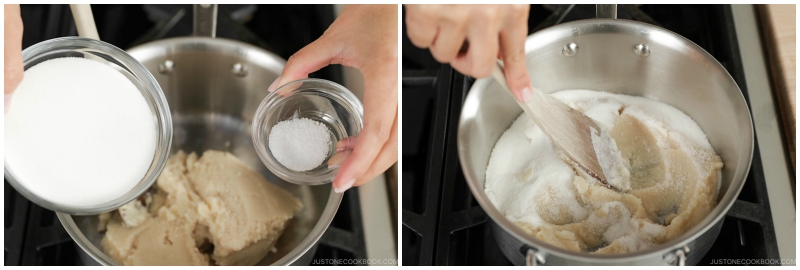
- Turn on the heat to medium low and let the sugar dissolve. The paste will become looser and softer.
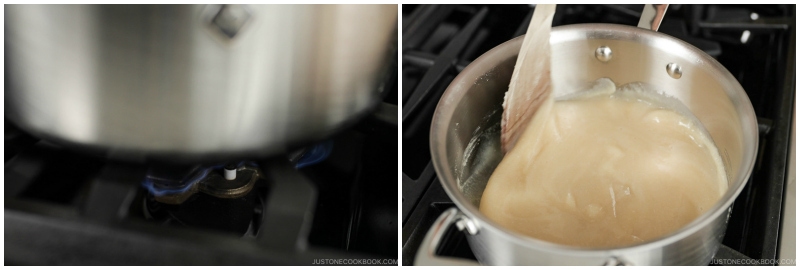
- Then, let the moisture evaporate from the mixture until it becomes a smooth and moldable paste, roughly 15–20 minutes. Keep an eye on the paste at all times to make sure it doesn‘t burn. When you can draw a line on the bottom of the pan with your spatula, it’s done. Remove from the heat. Moisture will continue to evaporate as the paste cools down, so remove it from the pot immediately.
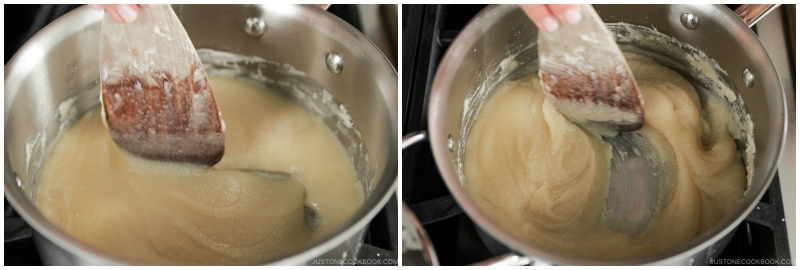
To Store
- Transfer the white bean paste to a clean container with a lid. If you’re using it in a few days, refrigerate. Otherwise, divide the paste into small portions and freeze for up to 2–3 months.
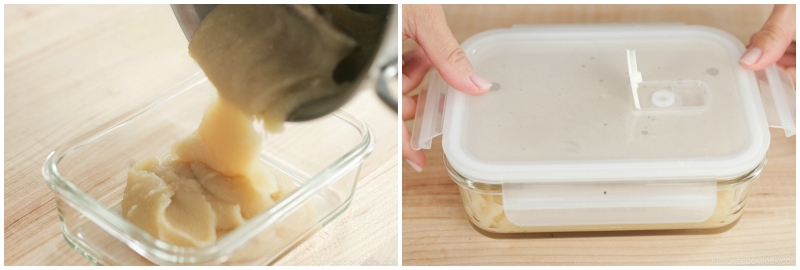
Notes
- Lima Beans: If you’re in Japan, you can get a variety of shiro ingen mame (白いんげん豆) such as shirohana mame (白花豆), ofuku mame (大福豆), tebo mame (手亡豆), or kintoki mame (金時豆). Or you can use shiro azuki (白小豆). For white bean paste, please use lima beans (butter beans) or navy beans. If you can't find them, then the last option is cannellini beans. I do not recommend substituting other beans because the taste and texture will be completely off.
- Sugar: Please use granulated white sugar, and do not use sugar that has a color (such as brown sugar) because you're trying to make WHITE bean paste. If you’re going for traditional white bean paste, the sugar amount will be two-thirds to one part sugar (by weight) to one part dried beans. If you reduce the amount of sugar significantly, it will not give enough moisture to the paste, which may result in a different texture. Wagashi is meant to be a bit on the sweet side in order to complement the bitter taste of matcha (drink).
Nutrition
Calories: 811 kcal · Carbohydrates: 192 g · Protein: 16 g · Fat: 1 g · Saturated Fat: 1 g · Sodium: 566 mg · Potassium: 1019 mg · Fiber: 14 g · Sugar: 156 g · Calcium: 36 mg · Iron: 5 mg